September is National Preparedness Month in the United States, and this month’s special designation reminds us to be prepared in case of a local or national emergency. The United States Ready.gov site provides detailed information about possible disasters and emergencies and how to plan for them in your family and community.
So watch the video below and find out why, as a traditional foods home cook, you’ll want to ask yourself three crucial questions about your pantry before the end of National Preparedness Month. If you’re not sure of your answers to these questions, now’s the time to educate yourself and take action. (And I’m here to help!)
Affiliates note: As an Amazon Associate I earn from qualifying purchases. My content may contain affiliate links to products and services. If you click through and make a purchase, I’ll receive a small commission. It does not affect the price you pay.
Table of Contents
- Crucial Pantry Questions Video
- Question 1: Do You Have Enough Water?
- Question 2: Do You Have Non-Electrical Equivalents for Your Electrical Devices?
- Question 3: Do You Have an Electrical Generator?
- Bonus Question: Do You Have Paper and Printed Products?
- Congratulations on Being Prepared!
- Prepper Pantry Videos
- Download Your Free 36-Page Pantry List
- The Modern Pioneer Cookbook
- Join the Traditional Foods Kitchen Academy
- Kitchen Academy Videos
- Shop for items used in this blog post or video
Crucial Pantry Questions Video

Question 1: Do You Have Enough Water?
If a disaster happens and your water supply gets shut off or becomes contaminated, do you have enough drinkable water for yourself and your family?
Think about this occurring right now. Where would you go in your house to get emergency water? You can’t get it from your tap. You will have had to already store your emergency supply of water in bottles or other sterile containers to be prepared for this emergency.
Ready.gov recommends one gallon of water per person per day for drinking and sanitation. Their website recommends having several days of supplies, so let’s round the number of days up to at least two weeks. Hopefully, your local water supply will have been fixed by then, or you’ll know where to go to get potable water and other supplies.
So, if you have a family of four, you’ll need 4 x 14 = 46 gallons of water. That’s a lot, but it’s better to be oversupplied than undersupplied.
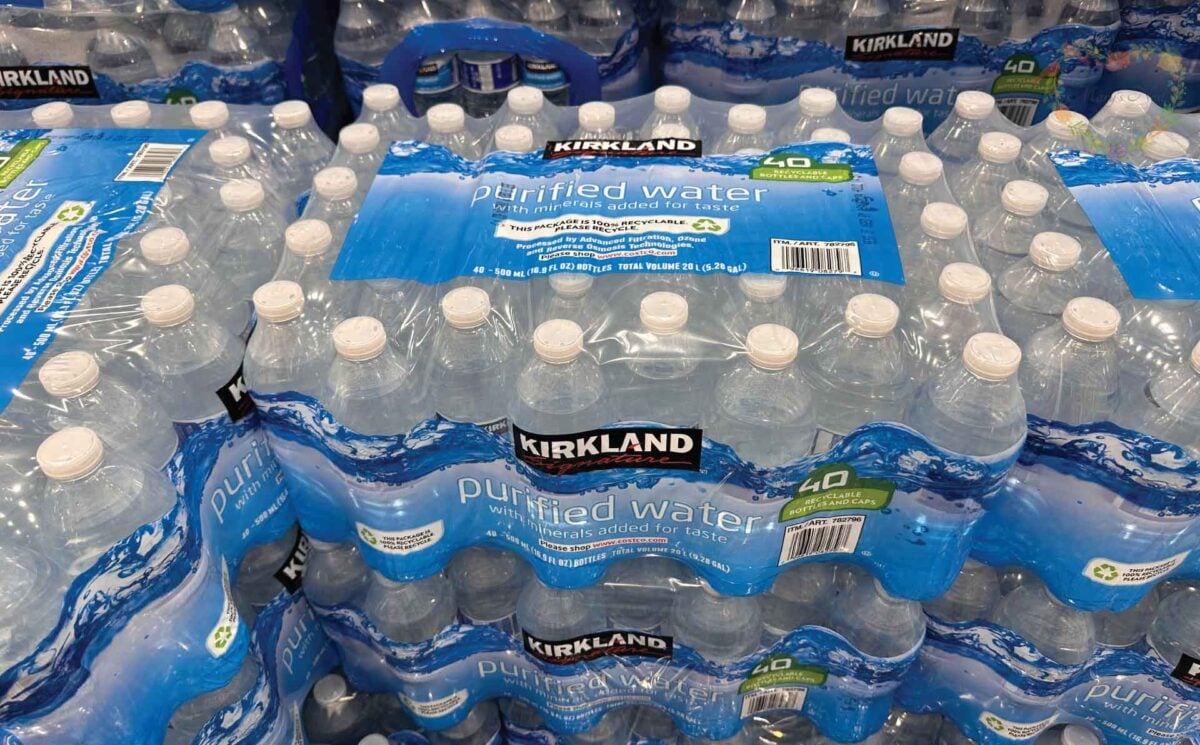
In today’s video, I also recommend having more than that amount of water. Perhaps aim for two gallons per person per day. As we discovered during one of our terrible Texas ice storms, we were able to share water with our friends and neighbors because we had stored more than the minimum amount. (Parts of the water supply in our area were completely offline during the storm.)
Where to Store Your Emergency Water Supplies
You can store your emergency water supplies in your Extended or Prepper Pantry, which is part of your Four Corners Pantry. Not sure what a Prepper Pantry is? Learn more with the following resources:
- Prep Like a Pro With the Ultimate Four Corners Pantry System
- The 3 EASY Ways to Lower Preparedness Anxiety
- How to Prep a Pantry That Can Withstand Price Controls
If You Have More Time to Prepare for a Water Shutoff
For extra credit, you’ll also want to answer the question, what would you do if you had a few hours advance notice that the water supply was going to be shut off or that you had good reason that you wouldn’t have access to water after a natural calamity?
You could fill up your bathtubs and other containers with water, but there’s a chance the water you captured in this way could slowly leak down the drain or be contaminated by the vessel itself, such as by leftover soap or other detritus in the tub.

To prepare for this scenario, you’ll want to have a supply of WaterBob products (or similar devices) that you can put into your tubs, fill up, and keep free of contaminants until you need to access the water. We keep a few WaterBobs in our house, and we’ve filled up more than one in the past to ensure that we would have water in case a winter storm would ice over power plants and freeze up water pumping stations.
Water is essential to life. We can go for a while without food, but we need water to survive. Make sure you have access to enough drinkable water in case of an emergency.
Question 2: Do You Have Non-Electrical Equivalents for Your Electrical Devices?
Let’s say your electricity gets cut off, either because the weather knocked out a transmission line to your house or electrical suppliers cut power to your neighborhood because electricity was in short supply. (This happened to many communities in Central Texas in 2021 when the Texas Power Grid ordered shutdowns to preserve limited electricity supplies.)
If you lost power to your electric stove, what would you do? Sure. You can eat lots of peanut butter and room-temperature soup from the can, but that would get old after a while. Nothing boosts morale more than a warm meal or coffee, especially when there’s no heat or when the temperature is near 0°F outside.
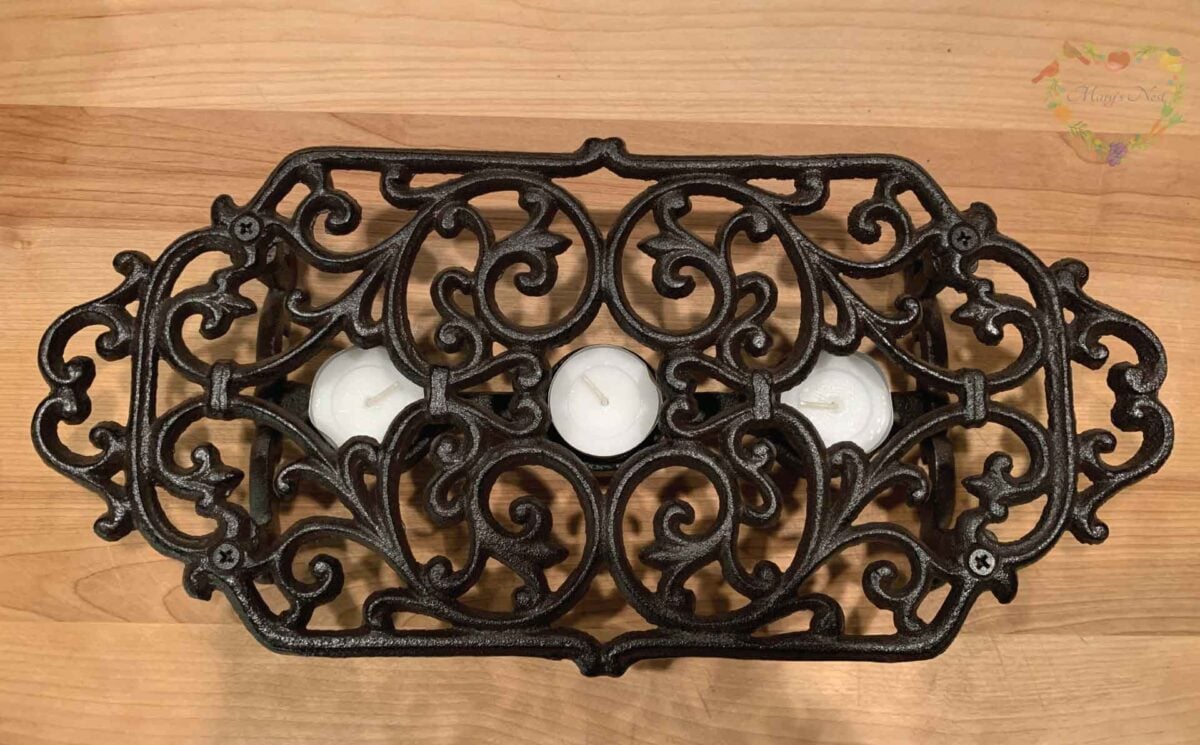
I found tea candles and a cast iron trivet that holds flaming tea candles to be heartwarming substitutes for a powerless stove. Of course, all open flames need to be supervised, but lighting just a few tea candles in your trivet turns it into something very powerful—a surface to boil water for hot tea or coffee or to warm soup. What an amazing gift to give your family when they may be bundled in several layers of cold in unpleasant circumstances.
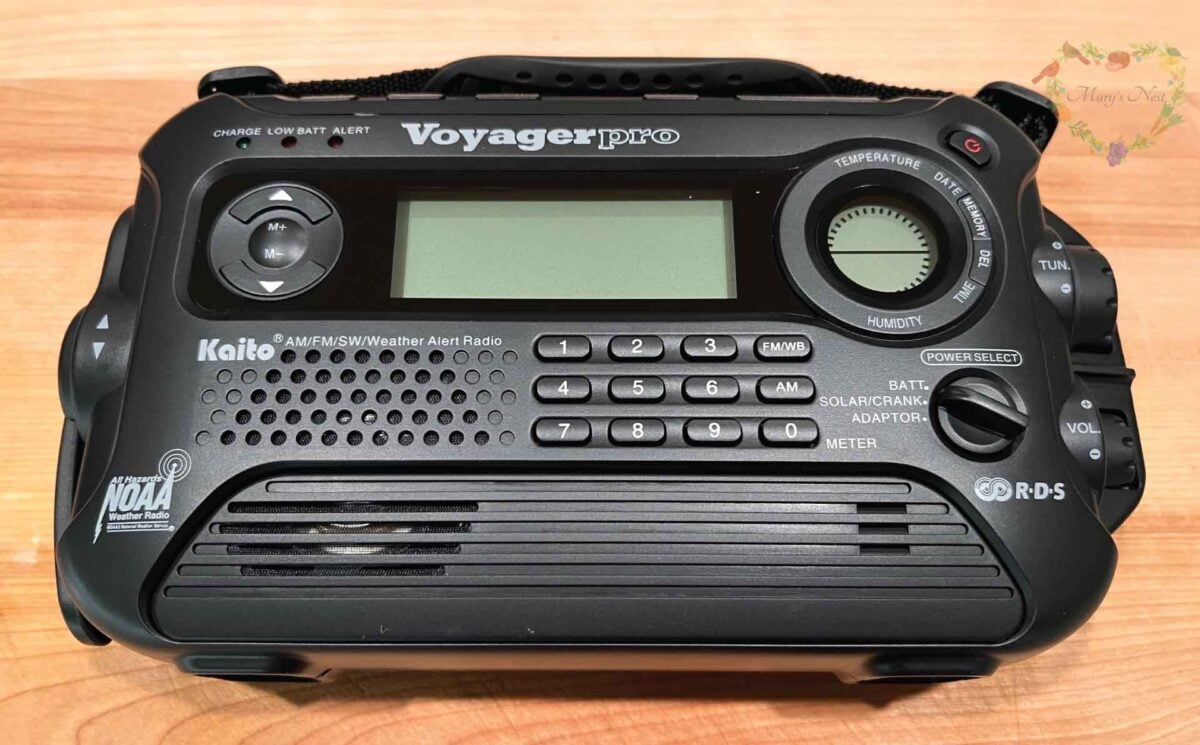
Are there other non-electric devices you can find substitutes for? Although not directly a pantry item, a hand-crank emergency radio is a perfect substitute for an electronic one that will wane as its batteries run out. These radios are easy to power through a little muscle motion, plus they typically also power an LED light that can come in handy when the sun sets and a winter’s darkness envelops your powerless home.
You don’t have to go so far as to get a hand crank grain mill (such as from Lehman’s Hardware Store with my link and discount code) as a substitute for your electric Mockmill grain grinder, but see if there are other appliances with functions you’d really like to have in case you lost power for an extended period of time. (I mention a few devices in today’s video.)
Question 3: Do You Have an Electrical Generator?
There are times when having electricity comes in handy and may be essential. Having a gas generator will give you lots of power, but then you have to make sure you have a ventilated space to run it and lots of gasoline to power it. Plus, you may not feel safe storing gasoline in your garage or near your house.
I use a solar-powered power station instead to generate electricity when I need it. You’ll want to periodically plug your power station into your electrical wall socket to keep it near capacity, especially during storm season. Having a fully-charged power station will enable you to draw electricity from it without having to immediately deploy your solar panels to refill its batteries. You may be able to just run on your stored power to keep your cell phones charged until the power comes back on for you and your community.
In today’s video, I talk about using our power station to run a coffee machine, but as I mentioned earlier, we can save our power and use a trivet with lighted tea candles to boil water to enjoy a mug of instant coffee.
You may also want a portable cooler to store some of your refrigerated foods or medicines that need to be kept cold. Normally, you could plug your portable cooler into an electrical socket to keep items cold, but without power in your house, your power station can provide power to your portable cooler to keep your refrigerated foods and sensitive medication at the right temperatures.
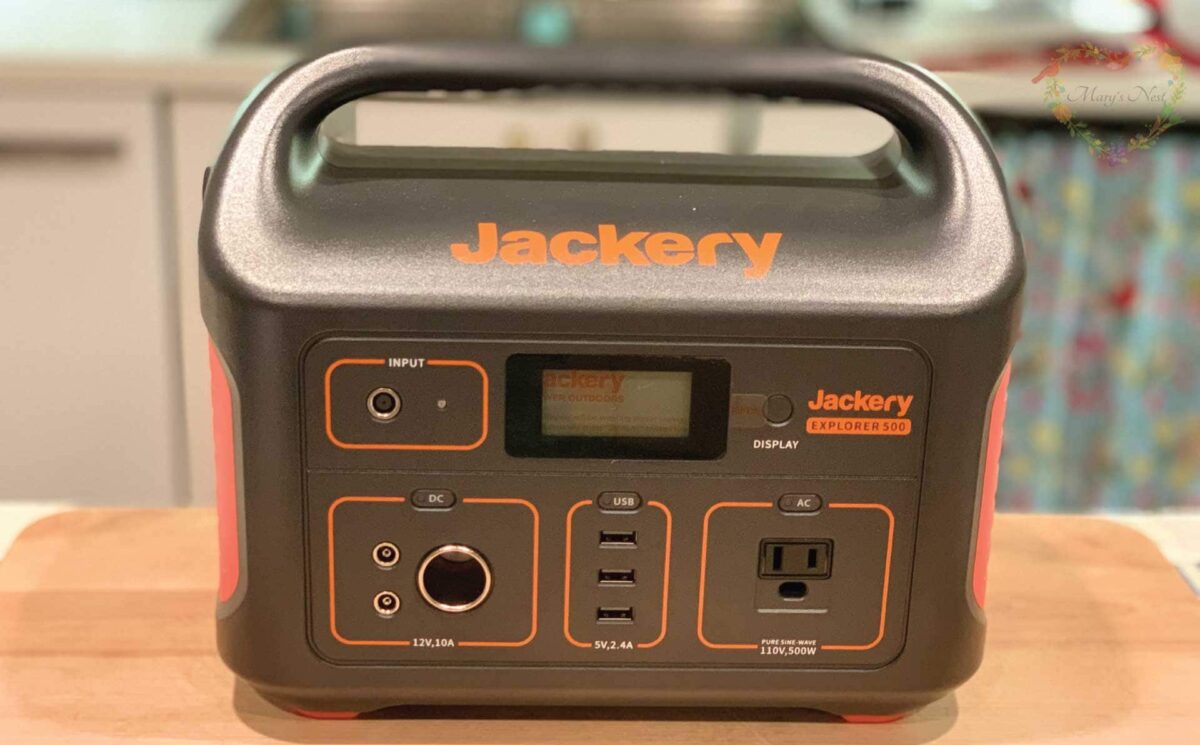
Recommended Power Stations
We have three types of Jackery power stations with solar panels to keep them charged over a longer period of time:
- Jackery Portable Power Station Explorer 500
- Jackery Portable Power Station Explorer 1500
- Jackery Solar Generator 2000 Pro
Note: Some of these models have been replaced by newer, more powerful ones. For the latest selections, see the Jackery Amazon page.
We reserve our smallest Jackery to keep our cell phones and other small devices supplied with power. We use our larger Jackery devices to provide the greater electricity required by larger devices, such as portable coolers.
Tip: Be sure to test your solar panels before an emergency strikes! In today’s video, I talk about my husband Ted’s experience trying to find the connector cables, which were hidden in the packaging. It was much easier to make sure everything was available and in place to charge our Jackery power stations without the stress of living under a natural disaster.

Portable Coolers We Recommend
As for portable coolers, we like the Kalamera brand, but since they may be sold out, there are many other portable cooler brands out there, too. Just determine how much power they require to see how much electricity they would drain from your power station over time.
Bonus Question: Do You Have Paper and Printed Products?
And remember to include a pen, pencil, paper, and notebooks as part of your supplies. (Perhaps a pad of sticky notes also.) You may not have the electricity to spare to power your electronic tablet to take notes, so be sure to have the manual equivalents available.
You’ll also want printed books or publications to help you pass the time or that you can consult in case of emergencies. We like having first aid books, including Where There Is No Doctor.
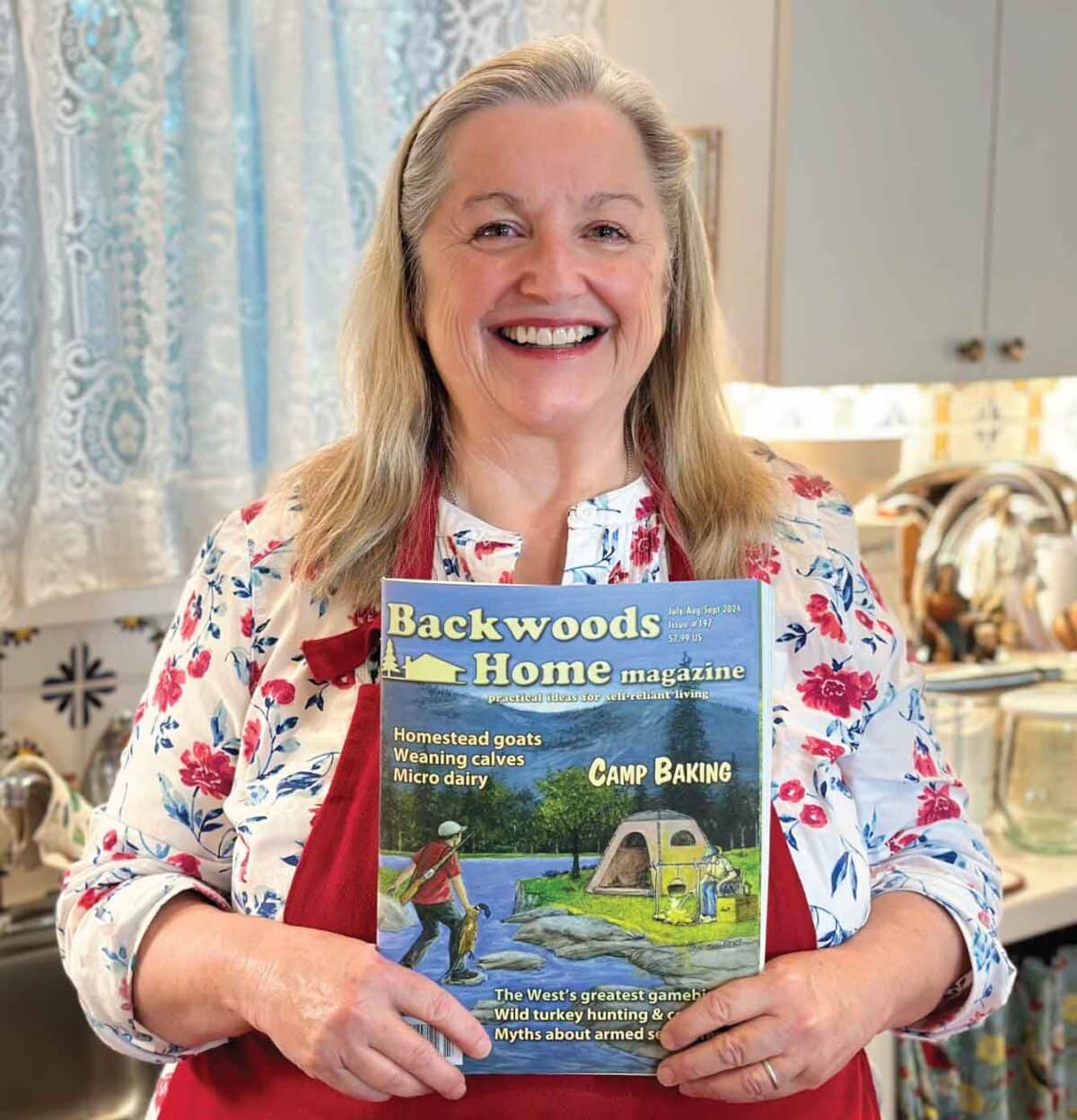
Printed Magazines We Recommend
We like to have printed magazines too since they’re easy to transport and read portions of as time permits. (We also enjoy reading magazines during regular times.) The Backwoods Home and Self Reliance printed magazines are two of our favorite publications, especially since they deal with topics of interest to traditional foods cooks and modern pioneers.
- Special Offer: The publisher of Backwoods Home and Self Reliance is offering my sweet friends 50% off subscriptions to their printed magazines. This is not a sponsored post. I love these publications, and I’m grateful you can get them at a discount.
Although you’ll spend a lot of your time concentrating on keeping the essentials going and trying to listen to news about what’s happening in your community or city during a natural disaster, you’ll be glad that you had a pen, notebook, printed books, and magazines available to consult and learn from as you wait for life to return to normal.
Congratulations on Being Prepared!
If you were able to take the actions needed to answer yes to these questions, congratulations! Thank goodness you prepared ahead of time!
Prepper Pantry Videos
Learn how to easily create an Extended or Prepper Pantry with these videos.
How to Prep a Pantry That Can Withstand Price Controls – The 3 Essential Foods to Stock NOW!
Learn about foods you should stock in your pantry that would be the most affected by future price controls.
The 3 EASY Ways to Lower Preparedness Anxiety
Take these simple steps to ease your “Preparedness Anxiety” and help you feel ready for the unexpected.
10 Essential Prepper Pantry Items to Stock Up On Now
As traditional foods cooks, our pantries are usually well stocked, but did you forget these essential items for complete preparedness?
Download Your Free 36-Page Pantry List
For an extensive list of the traditional foods you can make and purchase to stock your pantry, be sure to download my free 36-page Traditional Foods Pantry List. This comprehensive eBook is full of links to recipe videos, helpful articles, and more!
And if you’re looking for a printed book full of my traditional foods recipes that shows you how to create a traditional foods kitchen, be sure to order your copy of my new bestselling book, The Modern Pioneer Cookbook.

Order YOUR COPY Now!
The Modern Pioneer Cookbook
Seasonal ingredients, traditional techniques, and nourishing recipes. Over 85 traditional, from-scratch recipes! Discover for yourself how you can use simple ingredients and traditional techniques to cook the modern pioneer way.
Join the Traditional Foods Kitchen Academy
Are you looking for more traditional foods videos? If so, I invite you to join the Traditional Foods Kitchen Academy. Members of this optional paid YouTube community get access to exclusive videos and other members-only perks. Plus, your YouTube comments include a special members-only badge.
Kitchen Academy Videos
Discussing the Secrets to Perfect Green Herbal Oils
Let’s talk about the popularity of flavored herbal oils.
Are You Salt Sensitive or Salt Resistant? Get the Latest Salt Intake Research
Learn how your body may react to salt intake differently from others.
What Is the Best Time to Eat Dinner?
Find out if eating dinner early or late is best for you. You might be surprised!
Stay in Touch with Mary’s Nest
- Subscribe to My YouTube Channel for Traditional Foods Videos (Free) - When you subscribe, be sure to click on the notification bell that will let you know each time I upload a new video.
- Subscribe to Mary’s Traditional Foods Newsletter (Free) - Get a free 36-page eBook for signing up: How to Stock Your Essential Traditional Foods Four-Corners Pantry.
- Join the Traditional Foods Kitchen Academy (Optional Paid) - For more detailed videos and exclusive members-only perks, join my YouTube membership community.
- Order The Modern Pioneer Cookbook (Optional Paid) - Get a printed book of Mary's nourishing recipes from a Traditional Foods Kitchen. This bestselling cookbook is published by Penguin Random House with their DK imprint.
I look forward to having you join me in my Texas Hill Country Kitchen!
Shop for items used in this blog post or video
Favorite Prepper Pantry Supplies
- Wireless Fridge and Freezer Exterior Thermometer
- Life Straw
- Water Disinfection Tablets
- Water BOB Tub Liner
- Cast Iron Trivet
- Tea Lights
- Glass Kettle
- Manual Can Opener
- Battery Powered Can Opener
- Long Lasting Ice Packs
- Igloo Cooler
- YETI Cooler
- Electric Cooler
- Jackery Solar Power Station
- Jackery Portable Solar Panels
- 10 Gauge Power Cord
- Kill A Watt EZ
- Hand Crank Flashlight
- High Powered Flashlight
- Hand Crank Emergency Radio
Favorite Kitchen Supplies
- Favorite Aprons
- Spice Grinder
- Countertop Burner (On my kitchen island in many recipe videos.)
- Handheld Vacuum Sealing System
- Vacuum Lids
- Whisk
- Silica Gel Packets (Helps keep moisture from building up in your mix)
- Cast Iron Dutch Oven
- 8-Quart Slow-Cooker
- Fat Separator (Clever kitchen device to help you decant bone broth)
- Flour Sack Towels
- pH Strips (Helps you check on the acidity of your vinegar)
Amazon Shop and Shopping Guide
- Visit Mary’s Nest Amazon Shop
- Visit my Shopping Guide page
Get up to 15% off for stocking your Traditional Foods Pantry and equipping your Modern Pioneer Kitchen, including discounts from US Wellness Meats, Farmhouse Teas, Lehman's, Masontops, Cultures for Health, Survival Garden Seeds, Redmond Real Salt, Plan to Eat, and More!
Recommended Reading
- The Modern Pioneer Cookbook
- Nourishing Traditions
- The Prepper’s Pantry
- Where There Is No Doctor
- Backwoods Home Magazine (with a 50% subscription discount)









